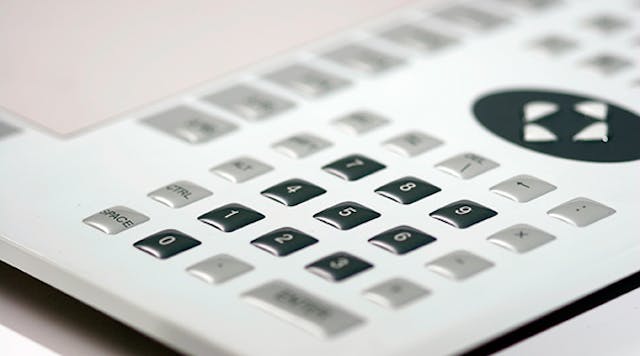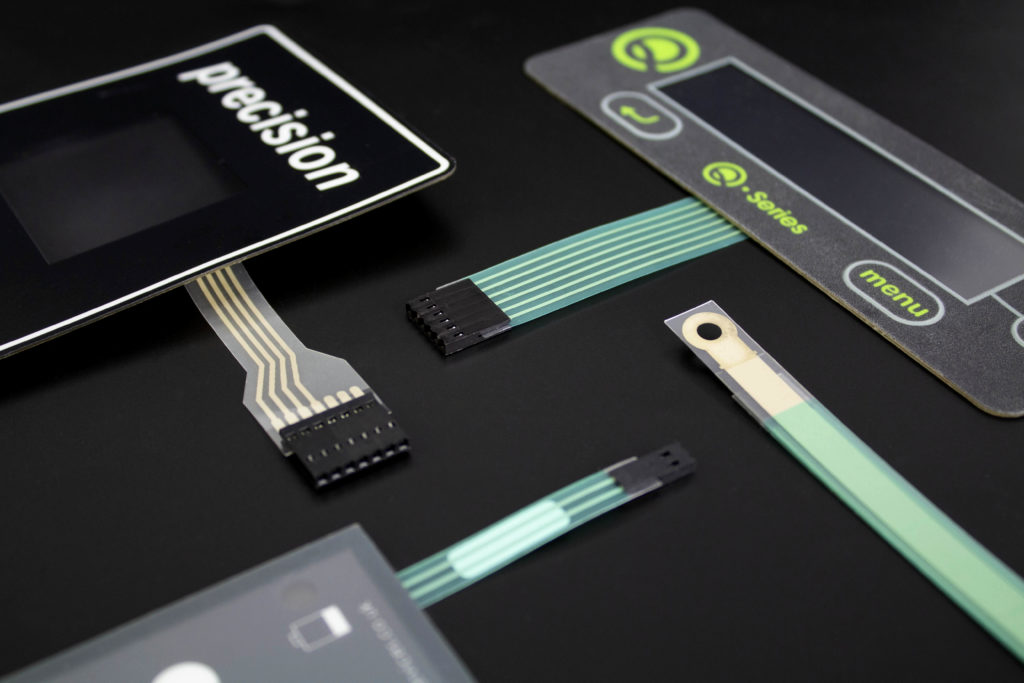Ensuring Quality and Longevity with Membrane Switches in Electronics
Ensuring Quality and Longevity with Membrane Switches in Electronics
Blog Article
Discover Just How Membrane Switches Function and Their Role in Modern Electronic Devices
Membrane Switches represent an advanced integration of innovation and layout within the world of modern electronics, acting as necessary interfaces in numerous gadgets. Made up of multiple layers, these switches utilize pressure-sensitive devices to facilitate individual interaction. Their applications cover numerous markets, from consumer electronic devices to clinical devices, highlighting their versatility and value. Recognizing the complexities of Membrane switch capability and their more comprehensive ramifications in enhancing customer experience welcomes further expedition into their design, benefits, and the ingenious developments forming their future in innovation.
What Are Membrane Buttons?

Membrane buttons are differentiated by their sturdiness and resistance to environmental elements, such as dust, moisture, and severe temperature levels. They can be customized with numerous graphics, shades, and tactile responses choices, improving user experience while keeping visual allure - membrane switches. Furthermore, the consolidation of published circuits permits smooth assimilation into devices, boosting total performance.
The convenience of Membrane buttons is noticeable in their ability to support both complex and simple control features. They can integrate features such as LED indications and touch-sensitive innovation, dealing with specific user requirements. As modern technology continues to advance, Membrane Switches continue to be essential for allowing efficient and instinctive customer interfaces, consequently playing an essential duty in the development of modern digital gadgets.
Parts of Membrane Switches
Membrane switches are composed of numerous essential parts that interact to create a functional and trustworthy user interface. The key elements include the graphic overlay, adhesive layer, spacer layer, and conductive traces.
The visuals overlay serves as the interface, generally printed on an adaptable substratum such as polyester or polycarbonate. This layer not only offers visual allure but additionally includes responsive feedback, visual cues, and safety features. Beneath the visuals overlay lies the adhesive layer, which secures the button to the tool and makes sure longevity against environmental stress and anxieties.
The spacer layer is crucial for preserving the necessary gap in between the graphic overlay and the circuit layer. When stress is used, this gap enables for the activation of the button. The conductive traces, typically made from silver or carbon, create the electric paths that finish the circuit when the switch is involved.
In addition, a backing layer might be included for structural support and insulation. These elements work together effortlessly, making sure that Membrane buttons are both durable and straightforward, making them vital in different modern-day electronic applications.
How Membrane Switches Job
How do Membrane Switches feature effectively within digital devices? Membrane Switches operate on the concepts of pressure-sensitive technology, using a layered building and construction that consists of visuals overlays, sticky layers, and conductive components.
The design of Membrane switches is crucial for their efficient operation (membrane switches). The layers are carefully engineered to supply tactile responses, toughness, and resistance to ecological factors such as wetness and dust. The inclusion of domes-- tiny, elevated locations within the button-- improves tactile action, offering customers with a noticeable click sensation upon activation
Additionally, Membrane buttons can be customized in regards to size, shape, and graphics, making them ideal for various applications. They are often made use of in control panels, medical gadgets, and consumer electronic devices because of their streamlined design and dependability. Overall, the efficient functioning of Membrane switches is critical in boosting user interaction and guaranteeing smooth procedure in contemporary digital gadgets.

Applications in Modern Instruments
Using their special design and functionality, Membrane switches have become essential anchor components in a vast array of contemporary digital devices. These versatile interfaces are used in customer electronic devices, commercial devices, medical devices, and automobile controls, offering smooth customer interaction.
In consumer electronic devices, Membrane buttons are commonly discovered in appliances like microwaves, cleaning makers, and various other family devices, where they enable intuitive control with a streamlined account. Their low-profile layout facilitates combination into portable tools, boosting visual charm without endangering performance.
In industrial applications, Membrane Switches act as control board for machinery, offering sturdiness and resistance to harsh environments. Their capability to withstand moisture and contaminants makes them optimal for usage in production and handling markets.
Medical devices additionally take advantage of Membrane switches, which are made to be simple to clean and keep, ensuring hygiene in medical settings. They are frequently made use of in analysis devices, person tracking systems, and mobile clinical gadgets, where integrity is paramount.
Benefits of Membrane Buttons
One of the essential benefits of Membrane buttons is their versatility, which allows them to be customized for a selection of applications across numerous sectors. These buttons can be designed in different forms and dimensions, accommodating special product needs while providing smooth integration right into tools. Their thin account enables a sleek and Continue small style, commonly boosting the visual allure of digital items.
Another considerable benefit is their toughness - membrane switches. Membrane buttons are usually resistant to dust, wetness, and chemicals, making them ideal for severe environments. This resilience expands their life expectancy compared to typical mechanical switches, decreasing the requirement for constant substitutes
Additionally, Membrane Switches deal cost-effectiveness. The manufacturing procedure entails printing technologies that minimize manufacturing prices, especially for big runs. This price, combined with low upkeep requirements, makes them an eye-catching choice for manufacturers.

Final Thought
In conclusion, Membrane Switches represent a significant innovation in individual interface technology within modern electronic devices. As the demand for durable and intuitive user interfaces continues to expand, the function of Membrane buttons in shaping customer experience will definitely expand.
Membrane Switches stand for an advanced integration of innovation and design within the world of contemporary electronic devices, serving as essential user interfaces find out in numerous tools.In the realm of modern-day electronics, Membrane Switches serve as critical elements that facilitate individual communication with gadgets. As modern technology continues to advance, Membrane Switches remain vital for enabling effective and intuitive customer interfaces, therefore playing a crucial duty in the improvement of contemporary electronic gadgets.
How do Membrane Switches function properly within digital tools? On the whole, the efficient performance of Membrane switches is critical in improving customer interaction and making sure smooth procedure in modern-day digital tools.
Report this page